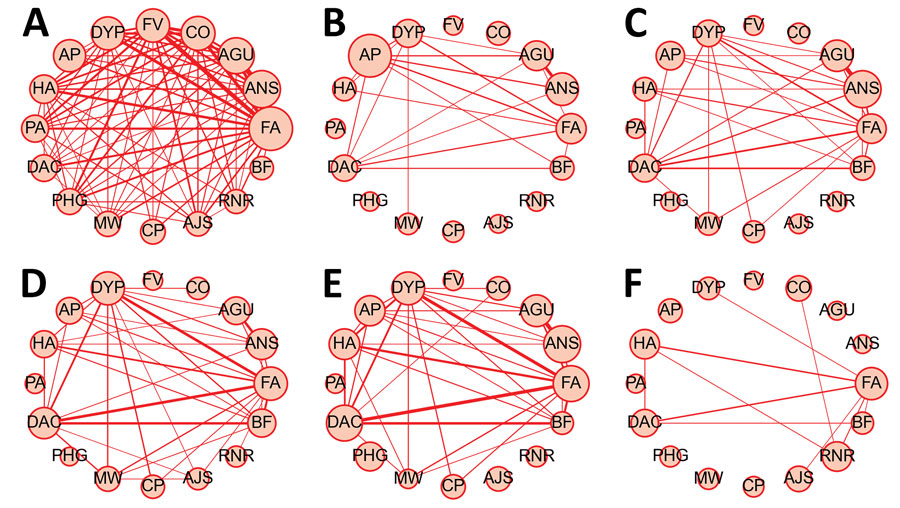Volume 29, Number 5—May 2023
Research
Case–Control Study of Long COVID, Sapporo, Japan
Figure 5

Figure 5. Co-occurrence network of symptoms among case-patients and controls in a case–control study of long COVID, Sapporo, Japan. A–E) Patients experiencing symptoms were queried at various timepoints after illness onset 2–3 mo (A), 4–6 mo (B), 7–9 mo (C), 10–12 mo (D), and 13–18 mo (E). F) Controls. Circle size and edge width are weighted based on number of occurrences; no edge indicates occurrence <0.5% of eligible participants. Counterclockwise order is based on the prevalence of each symptom at 2–3 months; we included the top 16 symptoms prevalent at 2–3 months from COVID-19 diagnosis. AGU, ageusia; AJS, arthralgia or joint swelling; ANS, anosmia; AP, alopecia; BF, brain fog; CO, cough; CP, chest pain; DAC, diminished ability to concentrate; DYP, dyspnea; FA, fatigue; FV, fever (temperature >37°C); HA, headache; MW, muscle weakness; PA, poor appetite; PHG, pharyngalgia; RNR, rhinorrhea.
1These authors contributed equally to this article.